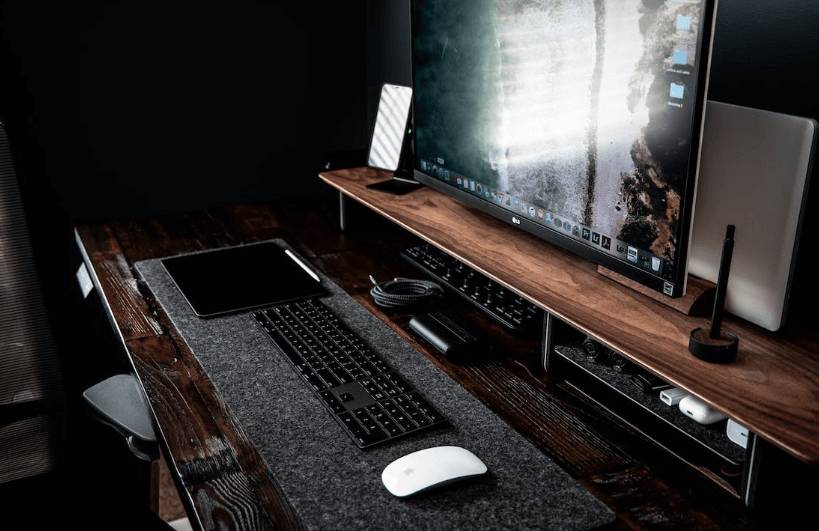The power supply is a critical component of any system – it is used by all other components, and its failure can lead to complete inoperability of the device. Let’s look at the main signs and diagnostic methods that will help you find out if the power supply has burned out.
Signs of power supply failure
- The computer does not turn on. This would be, naturally, the most simple and obvious sign. If nothing happens when you press the power button – no indicators light up, no noise from the fans, then most likely the problem is in the power supply.
- Unexpected reboots or shutdowns. If your PC suddenly starts rebooting or shutting down for no apparent reason, it could be due to an unstable PSU.
- Noise or odor of burning plastic. The PSU contains fans that can start making unusual noises when it malfunctions. In addition, if it overheats or burns out, it can emit a burning plastic smell.
- Problems with running heavy applications or games. The power supply may not cope with peak loads if it is defective or burned out.
Diagnostic methods
- Visual inspection. Check the PSU for visible damage, such as melted or charred plastic, leaks or deposits on the contacts.
- Check with a multimeter. Use this device to determine if the PSU is producing the correct voltage on all lines. This is a more complex method that requires certain skills and knowledge.
- Replacement. If you have the opportunity, try to replace the suspected power supply with a working one. If after replacement the computer starts working normally, then the problem was exactly in the power supply.
Warning signs
In addition to the obvious signs already listed, there are more subtle symptoms that can indicate an impending malfunction:
- Slow performance. If your PC starts running slower than usual, especially when performing resource-intensive tasks, this could be a sign of an unstable power supply.
- Frequent system errors. If you encounter a sharp increase in the number of system errors or blue screens of death (BSOD), the cause may be improper operation of the PSU.
- Increased system temperature. The PSU can overheat and overheat the rest of the system components, causing the overall temperature in the computer case to rise.
What to do if the power supply has burned out
If you suspect that the power supply has burned out, the smartest thing to do is to contact professionals. Although the power supply is a replaceable item, replacing or repairing it improperly can lead to more problems, including damage to other computer components.
Choose a new power supply according to the needs of your computer. It’s important to consider its wattage, compatibility with your motherboard and other components, and size to fit your system unit case.
Maintaining a functioning power supply
In addition to knowing the signs of a burnt-out power supply and being able to diagnose it, it’s also important to pay attention to prevention. Keeping it in good condition will help prevent failure and increase its lifespan.
- Clean out any dust. Dust inside your power supply can cause it to overheat and fail as a result. Clean it from dust regularly by using special computer cleaning products.
- Prevent overloading. If the PSU is constantly working at its maximum capacity, it can fail. Make sure that the power supply matches the needs of your PC.
- Maintain a normal temperature. High temperature is one of the main causes of failure. Make sure it is normal inside your PC case by ensuring good air circulation.
- Use an uninterruptible power supply. Sudden power outages can damage the power supply. Using an uninterruptible power supply (UPS) can help protect your equipment from such situations.
Choosing the right power supply
If your computer’s power supply has burned out and needs to be replaced, it’s important to choose the right new one. Here are a few factors to consider when choosing a new part:
- Power. This is probably the most important parameter. If the PSU is not powerful enough, it will not be able to guarantee normal operation of all components of the system. Excessive power, on the other hand, is not useful and can lead to unnecessary spending. Therefore, choose it taking into account the power requirements of your computer.
- Quality. You should not skimp on quality. Cheap components can be less reliable and durable. In addition, they can lead to unstable system performance or even damage it.
- Efficiency. Power supplies with high efficiency (Titanium, Platinum, Gold, Silver, 80 PLUS Bronze) convert electricity more efficiently, losing less energy as heat. This can lower the temperature inside the case and reduce energy costs.
- Connectors. Make sure that the PSU has all the necessary connectors for your device’s components. This includes connectors for the motherboard, video card, hard disk, etc.
- Size. Not all power supplies may fit your case. Before buying, make sure that the part you choose is the right size for your system unit.
Replacing a power supply is a responsible process that is important to do correctly. If you do not have experience in this, it is better to contact professionals. Don’t forget about preventive measures to avoid damage to the new part and prolong its life.
Conclusion
Malfunctions in the work of the power supply unit can lead to serious problems with your device. However, knowing the main signs of malfunction, you will be able to quickly identify the problem and take the necessary measures.
Remember that timely diagnostics and prevention can significantly increase the life of the power supply and the device in general. Understandably, you may need help from experienced professionals when dealing with a breakdown. There’s no problem in finding technicians who specialize in computer or even turntable repairs in NYC. Still, regardless of where you live – make sure you know whom to turn to for assistance.
